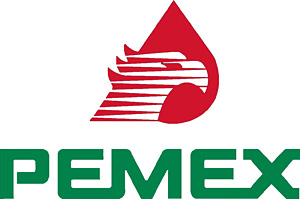Mexico City, Mexico - Mexico’s state-owned oil company, Pemex, is moving forward with its first new-build refinery complex in years at Tula. Planning for the new 250,000 barrels per day (bd) refinery continues, with over $450 million of the $9 billion total committed to construction of the plant in 2012. Pemex is targeting the end of 2015 to begin refinery operations at the plant, but GlobalData expects that delays will push it into 2017.
The new plant, dubbed the Bicentennial Refinery, will be configured to run the heavy-sour crude oil that makes up the bulk of Mexico’s crude oil exports. Pemex hopes it will be able to capture a stronger netback running Maya crude while cutting the country’s refined product import bill. Mexico currently imports close to 500,000 bd of refined products, worth an estimated $26 billion. Cutting back on that outflow of capital would seem to be a priority. Pemex says the new refinery will be capable of producing 168,000 bd of gasoline and 116,000 bd of diesel.
Just last week, BP’s 265,000 bd refinery in Carson, California, was sold to US independent refiner Tesoro for $2.5 billion, along with marketing and retail assets in a deal that will close in mid-2013. The Carson refinery is configured much like the planned Pemex refinery, so the question arises in Mexico and abroad whether Pemex is smart in spending so much on building a refinery.
Pemex floated the idea of buying refining assets abroad as recently as this summer, as a more cost effective way of meeting Mexico’s growing refined product demand. Pemex officials have looked at assets in the US, where it could easily ship crude oil North and move products South with just a few days lag.
Pemex officials stated that valuations on US refining assets were too high, but the BP-Tesoro deal might have them rethink their strategy. This type of deal would have similar logistics to a joint venture Pemex entered into with Royal Dutch Shell in 1994. Pemex supplies crude oil to a refinery in Deer Park, Texas, taking back 50% of the refined products.
In 2011, Pemex brought 150,000 bd of new crude distillation capacity online at Minatitlan. Pemex also plans to invest a further US$3.5 billion in existing refineries, upgrading the quality and quantity of its product output in efforts to meet more stringent environmental regulations and burgeoning demand. Over the period 2009-2011, Pemex’s refineries’ utilization rates fell to 69.1% from 84.1%, mainly due to aging infrastructure.
Mexico remains a top importer of refined products, as its refining capacity isn’t able to keep up with growing demand from its population. Gasoline imports in 2012 are on pace to equal those in 2010 after peaking at 405,200 bd in 2011. Mexico’s diesel imports are also running at the same level as seen in 2010 after peaking at 112,400 bd in 2011. The Mexican Ministry of Energy forecasts that once all of upgrading and construction projects are completed in 2017, Mexico will be capable of producing almost 900,000 bd of gasoline and just over 650,000 bd of diesel, assuming it can run its refineries at close to 100% utilization, which would be unlikely.
In 2012, Mexican gasoline demand has held steady near 784,000 bd, while diesel demand has neared 300,000 bd. Mexico’s products imports bill won’t see any real relief until early 2017 when the Bicentennial Refinery starts up. Incremental domestic production gains from planned capital projects at the other refineries will only cover a small percentage of expected refined product demand until then.


